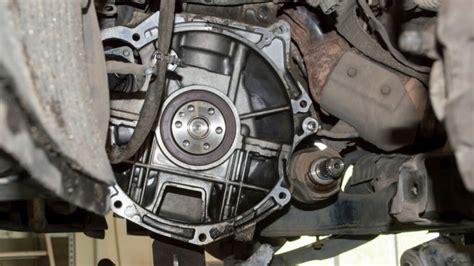How to Fix a Leaky Rear Main Seal: The Ultimate Guide
A leaky rear main seal is a frustrating but common problem for car owners. This seal, located where the engine's crankshaft exits the engine block, prevents oil from escaping. When it fails, you'll see oil dripping onto the ground, typically near the back of the engine. This guide provides a comprehensive overview of diagnosing and, if possible, repairing this often-challenging issue. Note: This guide provides general information. Specific procedures vary greatly depending on the vehicle's make, model, and year. Always consult your vehicle's repair manual for detailed instructions specific to your car.
Diagnosing a Leaky Rear Main Seal
Before you jump into repairs, it's crucial to correctly diagnose the problem. A leak might appear to be coming from the rear main seal, but the source could be something else entirely.
Is it Really the Rear Main Seal?
Several other components could be the culprit of an oil leak near the rear of the engine. These include:
- Transmission seal: Leaks from the transmission can often be mistaken for a rear main seal leak.
- Oil pan gasket: A leak from the oil pan can sometimes travel down the engine block, making it seem like it's originating from the rear.
- Valve cover gasket: While less likely to reach the rear of the engine, a significant valve cover leak could drip down and confuse the diagnosis.
To pinpoint the leak's source, thoroughly clean the engine and surrounding area with degreaser. Then, run the engine for a short period and carefully observe where the oil is leaking from. Look for fresh oil – it will be noticeably shiny and different from old, caked-on grime.
How Difficult is it to Replace a Rear Main Seal?
This is often a question asked by car enthusiasts facing this repair. The difficulty level varies greatly based on the vehicle's design. Some vehicles allow for rear main seal replacement without removing the engine, while others require a complete engine removal, making it a very labor-intensive job.
Factors affecting difficulty:
- Engine type: Front-wheel-drive vehicles often present more challenges than rear-wheel-drive vehicles.
- Vehicle design: Some engine designs make access to the seal much easier than others.
- Mechanic experience: A skilled mechanic will be able to complete the repair more efficiently.
Can I Repair a Leaky Rear Main Seal Myself?
This is a significant undertaking and not recommended for novice mechanics. Replacing a rear main seal often requires specialized tools, significant mechanical knowledge, and patience. The complexity and labor involved often make professional repair the more cost-effective option.
What are the Costs Associated with Rear Main Seal Replacement?
Costs vary widely based on location, labor rates, and the vehicle itself. Expect to pay anywhere from a few hundred dollars for simpler repairs to several thousand dollars for more complex jobs requiring engine removal.
How Long Does it Take to Replace a Rear Main Seal?
The repair time can range from a few hours for straightforward jobs to several days if engine removal is necessary.
What Happens if a Leaky Rear Main Seal is Left Unrepaired?
Ignoring a leaky rear main seal can lead to several serious consequences:
- Low oil levels: This can cause engine damage due to insufficient lubrication.
- Engine seizure: Severe oil loss can lead to catastrophic engine failure.
- Environmental concerns: Oil leaks contribute to environmental pollution.
Conclusion
Replacing a leaky rear main seal is a challenging repair that's best left to experienced mechanics unless you have extensive mechanical experience and the right tools. Accurate diagnosis is crucial to avoid unnecessary repairs. Weigh the cost and complexity against the risks of ignoring the problem. Choosing a reputable mechanic for this repair will save you time, money, and potential engine damage in the long run.

